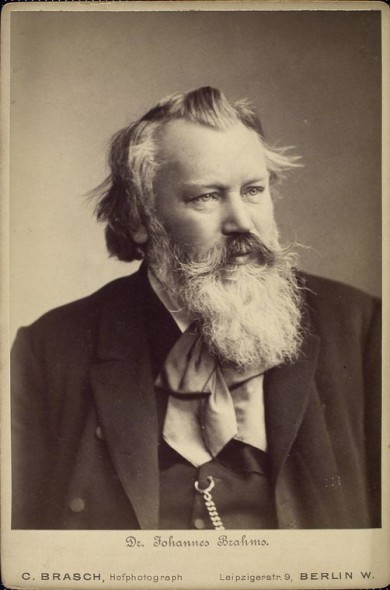Miami Symphony, soloists offer refined and powerful Brahms

The Miami Symphony Orchestra performed music of Johannes Brahms Sunday night at the Arsht Center in Miami.
While Brahms’ Double Concerto for Violin and Cello was once a staple of the repertoire, performances of Brahms’ last orchestral work have become increasingly less frequent as cash-strapped orchestras have avoided the score’s requirement of two soloists. The Miami Symphony Orchestra’s performance Sunday night at the Arsht Center was, therefore, doubly welcome. Opening an all-Brahms program led by music director Eduardo Marturet, the concerto received a refined, supple rendering by Daniel Andai, the ensemble’s excellent concertmaster, and Brian Manker, principal cellist of the Montreal Symphony Orchestra.
Andai and Manker proved fully equal to the concerto’s formidable demands in a performance that gained in momentum as it unfolded. At the cello’s first entry, Manker exhibited nimble dexterity, his intonation precise even in the daunting writing for the instrument’s highest reaches. Andai’s lean, sweet sound was a perfect match, the blend between instruments nicely focused with neither soloist overly dominant. In the opening Allegro, the duo brought spaciousness and depth to the second subject, finely combining lyricism and bravura.
The heart of the score comes in the singing lines of the second movement Andante. Andai and Manker interacted with the subtlety of fine chamber musicians, the long breathed melodies surging forward and played with lovely tone and a hint of expressive sadness. Here too the orchestral strings gained in richness and tonal warmth.
Musical clouds parted for a brilliant finale. The duo initially shaped the principal melody with almost Mozartean restraint, their sudden acceleration bringing extra intensity. Marturet led the orchestra with a steady hand, balances well judged and given proper weight.
Andai and Manker provided an unexpected encore with an exquisitely blended, precise and musical rendering of the Handel-Halvorsen Passacaglia
While Brahms’ Symphony No. 2 has sometimes been called the composer’s pastoral symphony, Marturet’s reading took a more epic approach. Tautly controlled, Marturet’st tempo in the opening movement was considerably faster than in many contemporary performances. He took the exposition repeat in the first movement, playing a bridge passage that is not usually heard. The opening horn melody was beautifully spun and the double basses provided that low string undercurrent that is uniquely Brahmsian. Marturet engendered a real sense of thrust with the brass climaxes registering strong impact.
The second movement flowed with the line of an elongated song. The ensemble’s rounded string sonority aided Marturet’s spacious performance with strong horn and oboe solos. Marturet’s fast tempo in the third movement Allegro grazioso gave the main melody a folksy cast in the vein of Dvorak. The final Allegro was “con spirito” indeed with ample power and energy.
The Miami Symphony Orchestra’s season continues 8 p.m. April 5 at the Florida International University Wertheim Auditorium and 6 p.m. April 6 at the South Dade Cultural Center with Daniel Andai conducting woeks by Bach and Prokofiev and Luis-Gomez Imbert and Jeff Bradetich as soloists in the premiere of Garcia’s Vocis Celestiales for Two Double Basses. 305-275-5666; themiso.org.
Posted in Performances
Leave a Comment
Mon Mar 3, 2014
at 1:36 pm
No Comments
